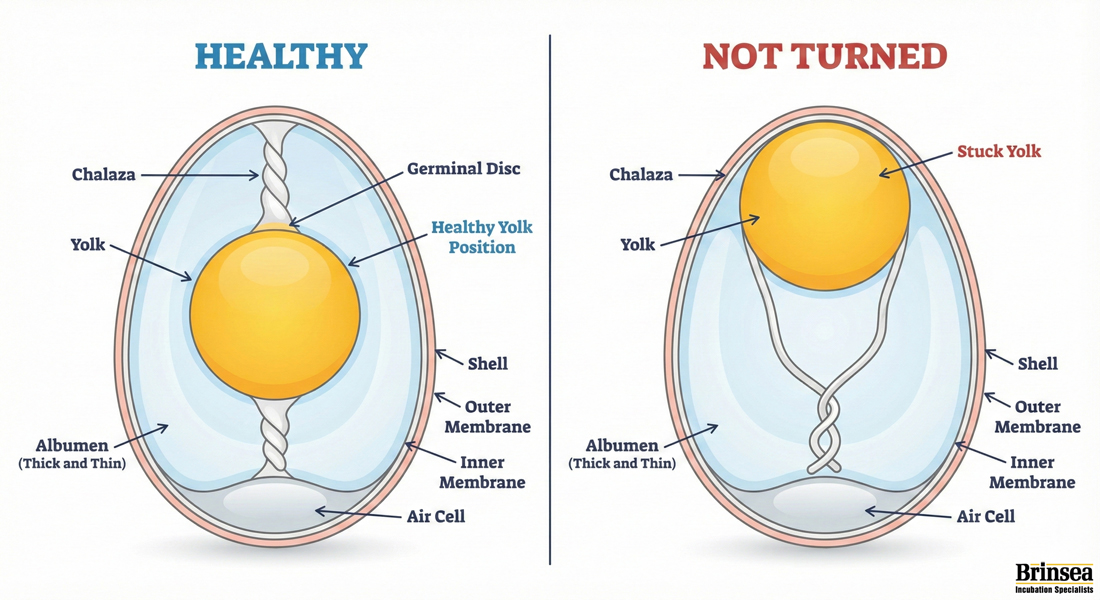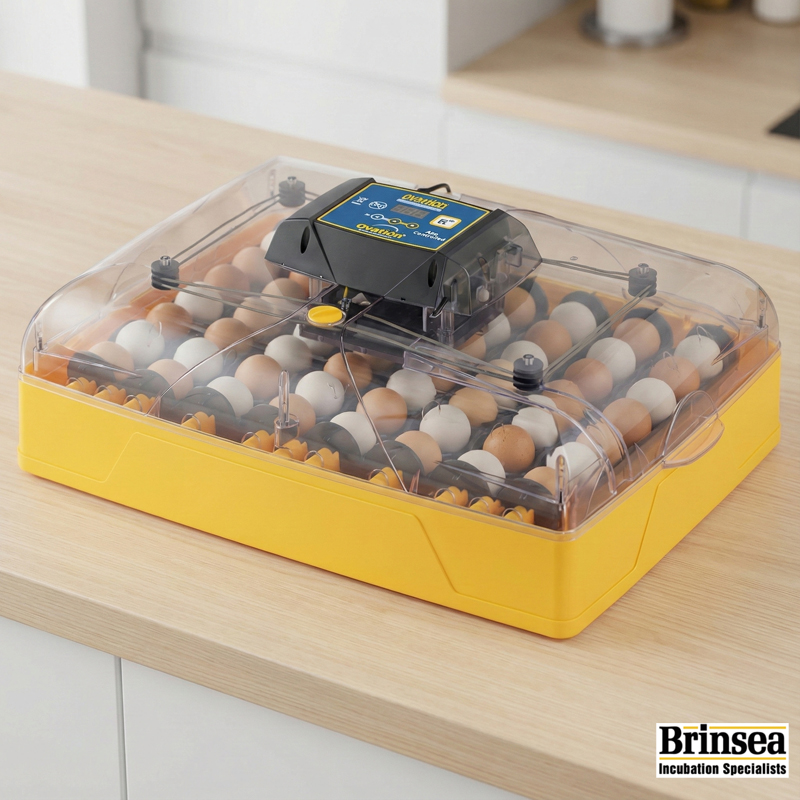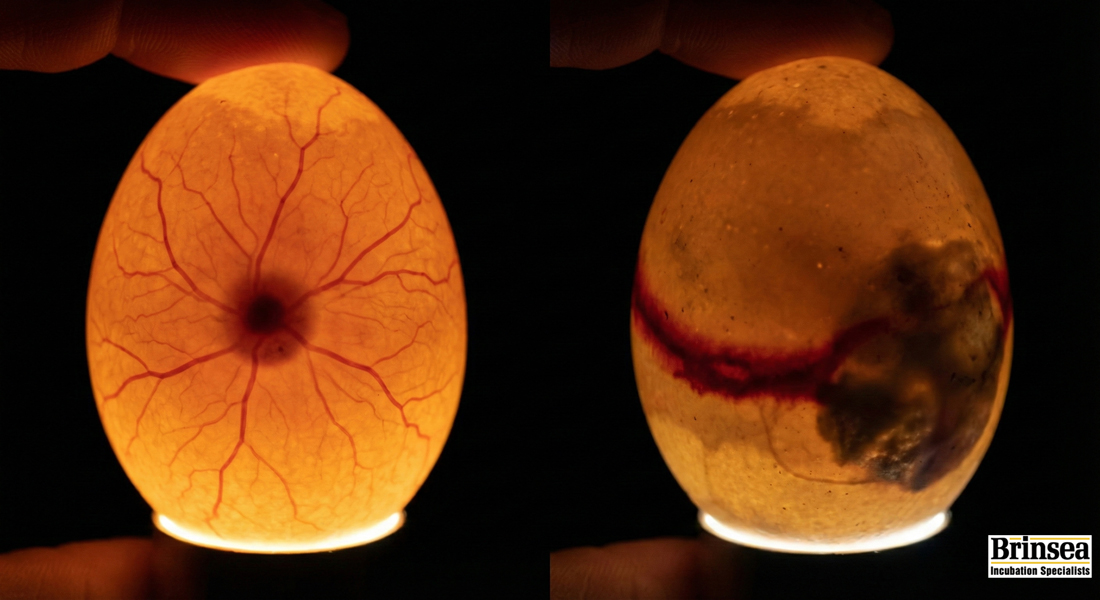
What Happens if You Don't Turn the Eggs in an Incubator?
There are many different conditions that must be met in order to properly incubate chicken eggs and bird eggs in general. What nature does effortlessly through instinct we must replicate through machinery. This replication is often clumsy and imperfect, but technology has taken great strides toward more efficiently copying nature. Most of the incubators manufactured and sold by Brinsea Products feature automatic turning, but if you find yourself incubating without this feature, it is imperative that you manually turn your eggs.
Key Takeaways
- Turn to Prevent Sticking: Turning stops the embryo from adhering to the shell membrane, which is fatal.
- Alternate Directions: Always alternate turning directions to avoid breaking the chalaza.
- Stop Before Hatching: Stop turning eggs two days before they are due to hatch (Day 19 for chickens).
-
Why Turning Eggs is Essential
Hens regularly turn their eggs, so it is important that we copy this habit in an electric incubator. But why? What will happen if we don’t? The first thing we need to look at is how eggs develop during incubation. Throughout the process the embryo grows into a baby chick, where improper temperature or humidity can spell disaster.
-
Prevents Sticking: As the embryo forms, the yolk becomes lighter and floats upward. The chalaza—a twisted membrane—serves as a rotating axis to keep the embryo on top of the yolk, but it only connects to the ends of the egg, not the sides. The yolk will continue to float upward toward the heat source. If not turned, it will eventually touch and stick to the inner shell membrane, which is fatal. Regularly turning the egg prevents this and ensures healthy embryo development.
-

The Chalaza acts as an anchor. If the egg isn't turned, the yolk floats up and sticks to the shell. -
Aids Nutrient & Waste Exchange: Turning allows the embryo to encounter fresh nutrients and oxygen. It also moves metabolic wastes away from the embryo. This is especially important during the first week of incubation.
How to Turn: Something that might seem obvious to an experienced hatcher but not to a beginner is which way to turn the eggs. We recommend placing eggs on their sides, as they are in nature. Turning should be from side to side, not end over end. The exception is commercial hatcheries that place eggs upright (pointed end down) to maximize space.
-
-
Methods and Frequency of Turning
How often and how far an egg should be turned depends on the species, primarily due to differences in egg composition and natural nesting behaviors.
-
Chicken Eggs (and other fowl): Turn about 80 degrees every hour.
Why? Chickens are ground-nesting birds, and this schedule mimics the hen's natural, less dramatic movements. The hourly frequency is a well-established standard in poultry incubation that ensures consistent heat and nutrient distribution, preventing adhesion without requiring extreme angles. -
Parrot Eggs: Require more frequent and larger turns—a good rule of thumb is 180 degrees a few times an hour.
Why? Parrot eggs often have a larger yolk in proportion to the albumen (egg white). This makes the yolk more buoyant, increasing the risk of it floating to the top and sticking to the shell membrane much more quickly. The more frequent and complete 180-degree turn is necessary to counteract this and ensure the embryo remains safely suspended.
Manual vs. Automatic Turning
Manual Turning requires diligence. If you are not using an automatic turner, it is a good idea to mark your eggs to help you keep track. You can draw marks on each side of the egg where it should be turned, or even a numbered sequence for more accurate reference.

Automatic Turning offers convenience and consistency. When choosing an incubator with this feature, it is important to consider the turning method:
- Tilting Trays, Troughs/Channels: These are typically for commercial use with poultry. This method strays from natural turning and is not recommended for non-domesticated birds like parrots.
- Moving Floor/Rollers: A rotating floor or rollers turn the eggs. This allows for larger angles of turn and has proven particularly beneficial for non-domesticated, exotic species. Specialized incubators like those from Grumbach, Inca, or Brinsea’s Contact and Zoologica models use rollers.
-
Chicken Eggs (and other fowl): Turn about 80 degrees every hour.
-
The Golden Rule of Turning
The egg must not be turned in the same direction every time. If this occurs, the chalaza (the membrane holding the yolk) will wind up and eventually break, causing embryo death. If you turn manually, alternate the turning direction. If you choose an incubator with automatic turning, ensure it turns the eggs in a random or alternate direction. All Brinsea automatic turners include this critical feature.
-
Troubleshooting Turning-Related Issues
While it's not uncommon for some eggs to fail to hatch, troubleshooting can help improve future results. Turning-related issues often manifest in specific ways:

Candling your eggs (shining a light through them) can reveal if an embryo has died or stuck to the shell. - Early Death (Days 3-6): Can be caused by insufficient turning.
- Mid-term Death (Days 7-17): Less common, but can be caused by improper turning.
- Failure to Pip: Inadequate turning results in decreased development and poor nutrient absorption, which can cause a fully-developed embryo to fail to pip.
- Dead in Shell (After Pipping): If an embryo pips but then fails to hatch, this can be caused by inadequate turning for the first 12 days of incubation.
Of course, these issues can be encountered due to a variety of other reasons. It is important to examine every aspect of the incubation process to help improve your method and ensure high hatch rates.
-
Crucial Final Step: When to Stop Turning
Turning must be stopped two days before hatching. Turning during hatching can cause injuries or inverted hatches (chick in the wrong position). In nature, a hen stops turning when she hears peeping. In an incubator, you must stop it manually or use a countdown timer.
For chicken eggs, stop turning on Day 19 (which corresponds to Day 2 on a countdown timer).
-
Brinsea: Copying Nature with Technology
Each species has different needs, and choosing the right incubator is crucial. Technology must follow nature's model. Brinsea incubators are designed to solve the key challenges of turning.
Brinsea's Solutions for Perfect Turning
- The Challenge: Manual turning is demanding and prone to error.
The Brinsea Solution: Reliable, consistent automatic turning across our range. - The Challenge: Different species need different turning angles and frequencies.
The Brinsea Solution: For fowl, the action of turning is key. For sensitive exotic species, advanced models like the Zoologica offer the programmability needed for precise control. - The Challenge: Turning in one direction is fatal.
The Brinsea Solution: All our automatic turners are designed to turn in random or alternate directions, protecting the chalaza.
At Brinsea, we offer a range of incubators to fit your needs, from small 7-egg models to large cabinets. We have the right incubator for you; all you have to do is visit our website today to start incubating!
- The Challenge: Manual turning is demanding and prone to error.

